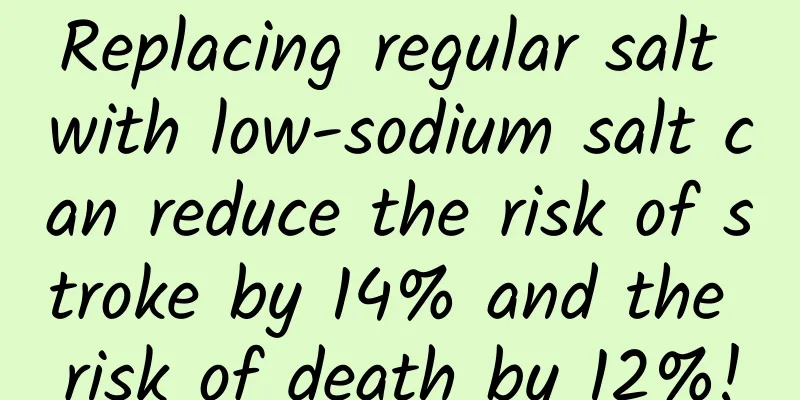What are the symptoms of ovarian adnexitis?

|
We all know that the female body structure is very complex, and there is a physiological cycle every month. Because of this, it is particularly easy to cause some gynecological diseases. Among them, ovarian adnexitis is the most common one. Once the ovaries are inflamed, it is particularly easy for women to not ovulate normally and it is difficult to conceive. This has a certain impact on women's physical and mental health and family. If such symptoms appear, they must be diagnosed before treatment. Let's take a look at the symptoms of ovarian adnexitis below. What are the symptoms of ovarian adnexitis? Clinically it is divided into acute and chronic types. 1. Acute adnexitis The main symptom is acute lower abdominal pain accompanied by fever. During gynecological examination, there is obvious tenderness and rebound pain in the adnexal area. Routine blood tests can show an increased white blood cell count and a significantly increased neutrophil ratio. If acute adnexitis is not treated promptly or thoroughly, it may turn into chronic adnexitis. 2. Chronic adnexitis There are abdominal pains of varying degrees. Chronic inflammation recurs over time, causing pelvic congestion, connective tissue fibrosis, and adhesion of pelvic organs. Patients experience symptoms such as lower abdominal distension, pain, and lumbar pain, which may be mild or severe, accompanied by increased vaginal discharge, low back pain, menstrual disorders, etc., and often worsen during menstruation or after fatigue. During gynecological examination, there is tenderness, thickening, or a tender mass in the adnexal area on both sides or one side, and the white blood cell count is elevated or normal. Some symptoms are sometimes not very obvious, but because the fallopian tubes and ovaries are adjacent to each other, it is difficult to distinguish when inflammation occurs. In particular, chronic inflammation of the fallopian tubes can lead to fibrosis, thickening and blockage of the fallopian tubes over time, and may also cause adhesion to surrounding tissues. If both ends of the fallopian tube are blocked, hydrosalpinx may form, and the accumulated water will penetrate into the ovaries that are adhered together, forming a fallopian tube ovarian cyst. It can easily cause infertility or ectopic pregnancy. The above is an introduction to the symptoms of ovarian adnexitis. After understanding it, we know that such a phenomenon will generally cause women to experience abdominal pain, irregular menstruation, and abnormal leucorrhea. However, we must remember that we cannot judge the disease based on symptoms. We must go to the hospital for examination before treatment. Female friends should also ensure good personal hygiene in their daily lives and go to the hospital for regular physical examinations. |
<<: What are some fitness plans for women?
>>: Treatment of bilateral lobular breast hyperplasia
Recommend
Pregnant women toss and turn, the fetus will be twisted
For pregnant women, all aspects of daily life sho...
Why is the discharge pink after sex?
After having sex, women have pink secretions, whi...
What to do if skin allergy is red and itchy? Generally, it will take a few days to heal.
I believe that many people now have different ski...
Dangerous brain tumor - How much do you know about glioma?
Author: Zhao Zheng, Associate Professor, Beijing ...
Can a peach tree grown by cuttings bear fruit? How can a peach tree be grown by cuttings to achieve a high survival rate?
Peach trees are very common in our daily life. Ma...
How to deal with peppercorns after frying green pepper oil? How to store peppercorn oil
Eating pepper oil in moderation is good for your ...
What should I pay attention to when I have adenomyosis?
Adenomyosis is a type of endometriosis in women a...
Woman gets angry and has a low fever
Adults also feel uncomfortable when they have a l...
Why is the surface of dried tofu sticky?
Dried tofu is salty, fragrant and refreshing, har...
Can dried lemon slices be eaten directly? Why do dried lemon slices taste bitter when soaked in water?
Lemon is a fruit food, which is rich in dietary f...
Which is better, duck intestines or goose intestines? How to make goose intestines crispier
In our daily life, especially when eating hot pot...
Can I eat soy during menstruation?
We all know that there are some things that women...
Can I eat sponge gourd during menstruation?
Golden loofah is also a vegetable food with high ...
What are the chances of pregnancy if you have sex on the day of ovulation?
Many couples who are preparing for pregnancy want...
Women have yellow water with a bad smell
In fact, the hygiene of women's private parts...









